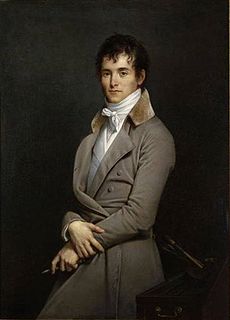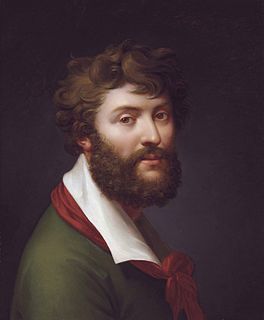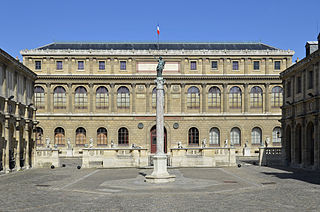![The Death of Gericault, an 1824 painting by Ary Scheffer depicting the death of Theodore Gericault, with his friends Louis Bro [fr] and Pierre-Joseph Dedreux-Dorcy (seated in the front). Ary Scheffer - La Mort de Gericault (1824).JPG](http://upload.wikimedia.org/wikipedia/commons/thumb/0/0e/Ary_Scheffer_-_La_Mort_de_G%C3%A9ricault_%281824%29.JPG/450px-Ary_Scheffer_-_La_Mort_de_G%C3%A9ricault_%281824%29.JPG)
Pierre-Joseph Dedreux-Dorcy (28 April 1789, Paris - 9 October 1874, Bellevue, Switzerland) was a French genre painter. His surname was Dedreux, but he was usually called Dorcy.
![The Death of Gericault, an 1824 painting by Ary Scheffer depicting the death of Theodore Gericault, with his friends Louis Bro [fr] and Pierre-Joseph Dedreux-Dorcy (seated in the front). Ary Scheffer - La Mort de Gericault (1824).JPG](http://upload.wikimedia.org/wikipedia/commons/thumb/0/0e/Ary_Scheffer_-_La_Mort_de_G%C3%A9ricault_%281824%29.JPG/450px-Ary_Scheffer_-_La_Mort_de_G%C3%A9ricault_%281824%29.JPG)
Pierre-Joseph Dedreux-Dorcy (28 April 1789, Paris - 9 October 1874, Bellevue, Switzerland) was a French genre painter. His surname was Dedreux, but he was usually called Dorcy.
He was the younger brother of the architect Pierre-Anne Dedreux (1788-1849, winner of the 1815 Prix de Rome), [1] and uncle of the painter Alfred de Dreux. He studied for some time under Guérin. His paintings, one of which, called 'Bajazet et le Berger,' is in the Museum of Bordeaux, are in the style of Greuze. He also painted, together with Géricault, a picture called 'La Baigneuse'.

Dedreux-Dorcy was one of the closest friends of Géricault, having met each other in the atelier of Guérin. [2] When Géricault fell ill after a fall of his horse, he stayed with Dorcy for over a year. Dorcy afterwards was one of the few friends of Géricault present when he died on 18 January 1824. [3] After Géricault's death, Dedreux-Dorcy bought his masterpiece The Raft of the Medusa for 6000 francs, while the French government, bidding for the Louvre, wasn't willing to bid more than 5000 Francs. He afterwards declined an offer to resell it to an American for thrice the price he paid, and sold it one week later to the French government for the same 6000 francs, on the condition that it was to be placed in the Louvre. [4] [5]

Jacint Rigau-Ros i Serra, known in French as Hyacinthe Rigaud, was a Catalan-French baroque painter most famous for his portraits of Louis XIV and other members of the French nobility.

The Raft of the Medusa – originally titled Scène de Naufrage – is an oil painting of 1818–19 by the French Romantic painter and lithographer Théodore Géricault (1791–1824). Completed when the artist was 27, the work has become an icon of French Romanticism. At 491 by 716 cm, it is an over-life-size painting that depicts a moment from the aftermath of the wreck of the French naval frigate Méduse, which ran aground off the coast of today's Mauritania on 2 July 1816. On 5 July 1816, at least 147 people were set adrift on a hurriedly constructed raft; all but 15 died in the 13 days before their rescue, and those who survived endured starvation and dehydration and practiced cannibalism. The event became an international scandal, in part because its cause was widely attributed to the incompetence of the French captain.

Pierre-Paul Prud'hon was a French Romantic painter and draughtsman best known for his allegorical paintings and portraits such as Madame Georges Anthony and Her Two Sons (1796). He painted a portrait of each of Napoleon's two wives.

Pierre-Narcisse, baron Guérin was a French painter born in Paris.

Jean-Baptiste Regnault was a French painter.

Léon Cogniet was a French history and portrait painter. He is probably best remembered as a teacher, with more than one hundred notable students.

Jean Hippolyte Marchand was a French cubist painter, printmaker and illustrator with an association with figures of the Bloomsbury Group.

École des Beaux-Arts refers to a number of influential art schools in France. The term is associated with the Beaux-Arts style in architecture and city planning that thrived in France and other countries during the late nineteenth century and the first quarter of the twentieth century.

Fleury François Richard, sometimes called Fleury-Richard, was a painter of the École de Lyon. A student of Jacques-Louis David, Fleury-Richard and his friend Pierre Révoil were precursors of the Troubador style.

Robert Jacques François Faust Lefèvre was a French painter of portraits, history paintings and religious paintings. He was heavily influenced by Jacques-Louis David and his style is reminiscent of the antique.

Pierre Bouillon was a French painter and engraver. Born at Thiviers, he studied with the Académie-trained history painter Nicolas-André Monsiau. He was awarded the grand prize of the Institut de France in July 1797. As drawing instructor at the Lycée Louis Le Grand in Paris, he was a teacher of both Théodore Géricault and Eugène Delacroix. He was employed extensively to make preparatory drawings for the engravings of Pierre Laurent's publication, Le Musée français; his drawing for Charles Clément Bervic's celebrated engraving of the sculpture of Laocoön is among the 27 examples attributed to him in this work. Pierre Bouillon was also responsible for a publication devoted exclusively to the classical sculpture of the Louvre Museum, consisting of plates which he drew and etched himself, Le Musée des antiques ..., issued in 3 large folio volumes, 1811-1827.

Adolphe Étienne Auguste Moreau-Nélaton was a French painter, art collector and art historian. His large collection is today held in its entirety by French national museums.

Claude Bonnefond, or Jean-Claude Bonnefond was a French painter and lithographer; noted for his portrayals of peasant life. His work was heavily influenced by a visit to Italy.

Pierre-Alfred Dedreux, who signed his works as Alfred de Dreux was a French portrait and animal painter, best known for his scenes with horses.

Pierre-Eugène Secrétan,, was a French industrialist and art collector.

Paul Jean Flandrin was a French painter. He was the younger brother of the painters Auguste Flandrin and Jean-Hippolyte Flandrin.
The French Restoration style was predominantly Neoclassicism, though it also showed the beginnings of Romanticism in music and literature. The term describes the arts, architecture, and decorative arts of the Bourbon Restoration period (1814–1830), during the reign of Louis XVIII and Charles X from the fall of Napoleon to the July Revolution of 1830 and the beginning of the reign of Louis-Philippe.

Marie Frédéric Eugène de Reiset was a French art collector, art historian and curator. He served as curator of the department of prints and drawings at the Louvre and as director-general of France's Musées Nationaux.

Antoine-Alphonse Montfort was a French painter, best known for his Orientalist landscapes and genre scenes.

Jean-Baptiste-Pierre Le Brun was a French painter, art collector and art dealer. Simon Denis was his pupil.
Attribution:
![]() Media related to Pierre-Joseph Dedreux-Dorcy at Wikimedia Commons
Media related to Pierre-Joseph Dedreux-Dorcy at Wikimedia Commons